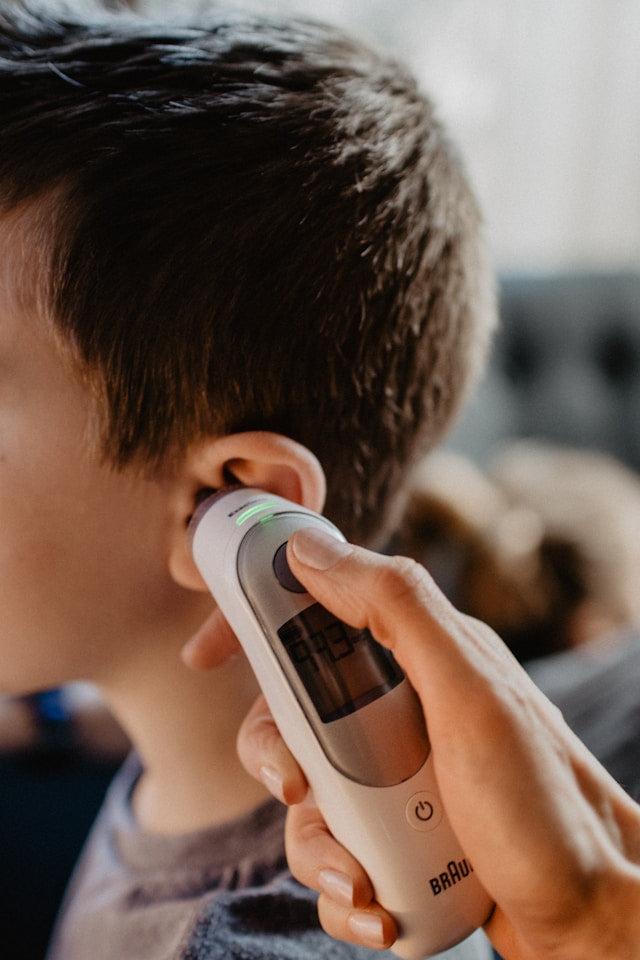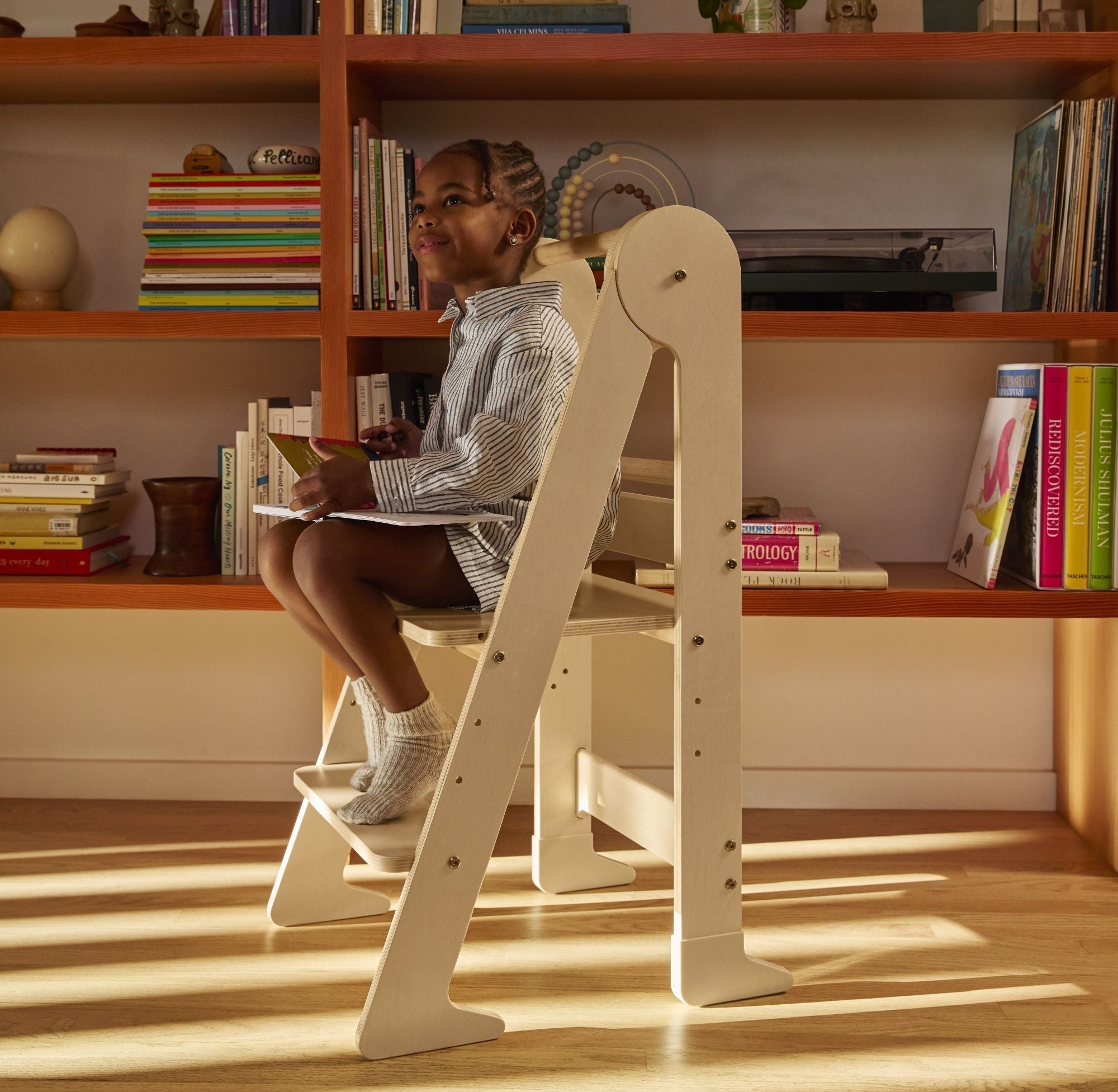In the middle of the night, when your baby is screaming, you need a reliable thermometer that takes quick readings. Accurate readings help you make the right decisions for your baby's health. As a mom of three, I know how stressful it is to worry about fevers, especially during the infant stage. Try these dependable thermometers for quick readings you can trust.
Which Is the Best Thermometer for Baby? Types of Thermometers to Consider
When I became a mom, I quickly realized I needed an accurate way to check my baby's temperature. My oldest got his first fever when he was just four months old, and I freaked out. All I had was a basic digital thermometer, but it was tricky to get it under his arm, and I didn’t know how to get an accurate reading.
When looking to purchase a new thermometer, I quickly learned about the many types. A forehead thermometer is my go-to for a quick, no-hassle temperature check. However, I also have a standard digital thermometer for under-the-tongue readings that I use when I need a more accurate reading. Here’s what you need to know about thermometer types and how to measure your little one’s temperature.
The Best Baby Thermometers
When choosing a thermometer, you are also choosing a temperature-taking method. From easy forehead thermometers to more exact digital thermometers, there are a variety of options. Here are our top picks for easy-to-use, reliable baby thermometers, mom-approved.
1. Best Baby Thermometer Overall: Kinsa - $24.99

Looking for a way to easily track your child's fever? Kinsa links to a free app that allows you to track the whole family's temperature over time. This helps notice spikes in temperature, how long your child has had a fever, and how quickly it returns after administering medicine.
When you're sleep-deprived and worried about your child, this feature is a game-changer. The readings are automatically logged, so you can also easily show your child’s pediatrician.
The Kinsa allows for oral, underarm, and rectal readings in just 8 seconds. Even if your little one is a wiggler, you can hold them still for just 8 seconds, minimizing the stress and struggle.
Choose to read degrees in Fahrenheit or Celsius with a simple toggle. Kinsa's thermometer has won multiple awards for its user-friendly features and accuracy.
2. Best Thermometer for Newborn Infants: Frida Baby - $16.99

When your baby is young, a rectal reading is the most accurate. Frida makes it easy for new parents to safely take their newborn's temperature. The ten-second reading is quick, meaning less discomfort for you and baby.
Frida's design ensures you don't insert the thermometer too far, making readings easier (and safer!) with squirmy babies.
3. Best No-Fuss Thermometer: Tommee Tippee - $38.89

This no-touch thermometer takes a reading in seconds. Use the infrared thermometer to scan your child's forehead for a quick, no-fuss reading.
One huge advantage Tommee Tippee's thermometer is that you can take your baby's temperature while they sleep. I've done this numerous times with infrared thermometers. Giving peace of mind to parents, you can avoid waking your baby if their fever is under control.
4. Best Multi-Use Thermometer: Vicks - $25

Another great infrared, no touch thermometer option, Vicks' thermometer is great for the whole family. This digital thermometer uses 2 AAA batteries that are easy to change.
Keep this thermometer in your medicine cabinet for your baby, child, and even adults in your house.
Another bonus is that you can use this thermometer to measure the temperature of your baby's bath water. The Mayo Clinic recommends a bath water temperature of about 100 degrees Fahrenheit for babies.
5. Best Thermometer for Kids: Boncare - $7.49

For a no-frills, budget-friendly thermometer, Boncare fits the bill. Use this digital thermometer for rectal, oral, and underarm readings in 10 seconds. Small, this thermometer is perfect for keeping in your diaper bag.
How to Choose a Reliable Thermometer for Your Family
Which method is best for taking your baby's temperature? You can use some thermometers in multiple ways. Others only allow one way.
Here’s the short version: For babies under three months old, do a rectal reading, such as the Frida or another digital thermometer. For older children, a digital thermometer is most accurate. But if you need a no-hassle way to take your wiggly or sleeping toddler’s temperature, an infrared forehead thermometer does the trick.
Rectal Reading
The American Academy of Pediatrics (AAP) recommends using a rectal reading for newborns until they are 3 months old. For this method, you'll insert a digital thermometer in your baby's anus.
Clean the thermometer and add petroleum jelly to the thermometer and your baby's bottom. Position your baby on their back with their legs bent to their belly. Gently insert the thermometer 1/2 inch to 1 inch. Wait for the thermometer to beep and check the reading.
Pro Tip: Purchase a separate thermometer only for rectal readings.
Armpit (Axillary) Reading
With this temperature reading method, you put the thermometer under your child's arm. Best for older children who can follow instructions, you may need to hold the thermometer in place. Usually, this method takes about a minute to register. This method may not be as accurate as oral and rectal readings.
Oral Reading
To take your child's oral temperature, place the thermometer under your child's tongue. Most digital thermometers beep when ready. If not, you’ll need to leave the thermometer in place for about one minute.
Ear Canal Thermometers
Some thermometers can take your child's temperature in their ear. For young children and babies, it can be easier to take their temperature this way, as it doesn't require your child to hold still as long.
Infrared Thermometers
You might know these as forehead thermometers. They use thermal radiation to quickly take temperatures on your child’s temple or forehead. These thermometers read temperatures in seconds. Unfortunately, they aren't as accurate as other methods.
As a mom, I love using an infrared thermometer on my child's forehead for peace of mind. Even when my littles are fussy, upset, or sleeping, I can take their temperature.
When my son got COVID-19, his temperature was stubborn. I remember sleeping beside him, thermometer in hand, to check periodically and ensure his temperature didn’t get too high. With a standard digital thermometer, I would have had to wake him. Then, when he woke up, I could take his temperature using a standard thermometer for a more accurate measurement.
What About Mercury and Alcohol Thermometers vs. Digital Thermometers?
Mercury thermometers are known for their accurate readings. While exact, the mercury thermometers many of us grew up with aren't practical for babies. These thermometers use mercury or alcohol enclosed in a glass tube to indicate temperature, making them dangerous if the thermometer breaks.
Thankfully, today, many digital thermometers are also accurate, easy to read, and much safer. With a digital thermometer, you don't need to worry about breaking pieces. Plus, digital thermometers can often take readings quickly, while mercury thermometers require up to three minutes to get a reading. When kids have a fever, who’s going to stay still long enough for that?
How to Measure Your Baby's Temperature
Which method is best for taking your baby's temperature? You can use some thermometers in multiple ways. Others only allow one way.
For babies under three months old, a rectal reading is most accurate, such as with the Frida or another digital thermometer. For older children, an oral reading with a digital thermomter is most accurate and practical. But if you need a no-hassle way to take your wiggly or sleeping toddler’s temperature, an infrared forehead thermometer does the trick.
Choosing the Best Thermometer for Your Baby
As a mom, my favorite thermometer is an infrared thermometer. When my children were young, it was easy to check their temperatures on their foreheads without waking them. However, I also liked having a second digital thermometer that I could use orally for better accuracy.
Choosing the best thermometer for your family depends on your needs and the age of your child. Which is your favorite? Let us know in the comments below.
Sources












Leave a comment
This site is protected by hCaptcha and the hCaptcha Privacy Policy and Terms of Service apply.